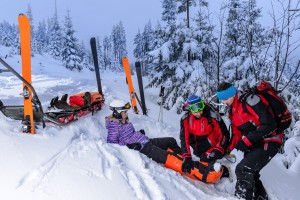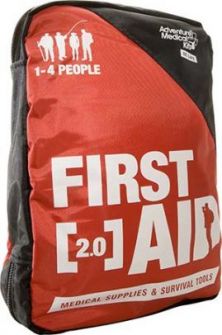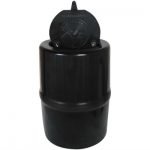Winter weather conditions create a fun playground for all kinds of sports enthusiasts.
 Winter sports and activities such as hiking, birding, ATV and snowmobile riding, cross-country skiing, sledding, ice fishing, wildlife viewing, and snowboarding are all popular in cold weather. But, they all carry high risks of getting injured.
Winter sports and activities such as hiking, birding, ATV and snowmobile riding, cross-country skiing, sledding, ice fishing, wildlife viewing, and snowboarding are all popular in cold weather. But, they all carry high risks of getting injured.
It is true that accidents may occur at any moment, but when you are performing physical activities in slippery and unstable conditions, accident potential rises. A bit of bad luck or a moment’s lapse of attention can lead to sprains, simple breaks or even compound fractures. Dealing with these injuries in the outdoors can be complicated as they require calling for help and evacuation of the casualty to a hospital.
Evaluating Injuries
Before heading to any trail, it is essential to prepare yourself. Take with you the basic equipment, such as first aid kit especially, when performing outdoor activities during winter.
 Broken bones, sprains, and dislocations are painful injuries that should receive medical attention as soon as possible. First aid techniques may be used to help immobilize or support the injury until medical help becomes available. First help the injured or yourself and sit down to run a quick head-to-toe exam to determine the type of injury and how bad it is.
Broken bones, sprains, and dislocations are painful injuries that should receive medical attention as soon as possible. First aid techniques may be used to help immobilize or support the injury until medical help becomes available. First help the injured or yourself and sit down to run a quick head-to-toe exam to determine the type of injury and how bad it is.
If the injured person is complaining of pain in a limb or joint, but no fracture is present, you should continue to look for other causes. The signs and symptoms of fractures include the inability to bear weight on or use the body part; significant pain, tenderness, and swelling; an observable deformity or bump; or a bone protruding through the skin or visible in the wound. People usually describe hearing a nasty crack.
It is very important to treat all injuries, including strains, sprains and dislocations as if they were fractures until proved otherwise. Once you are completely sure that there are no broken bones you can move on to other first aid techniques.
Sprains
Sprained ankles are one of the most common injures when hiking in the outdoors. A sprain is caused by trauma to one or more ligaments in a joint. Common sprains also include knee, wrist, finger and toe sprains.
Sit down and check your ankle for swelling or bruising and discoloration. Test if you step wrong and feel pain in your ankle. Check also if there is mobility loss at the affected joint.
 First aid for sprains typically includes immobilizing or supporting the affected area, similar to treating a fracture. If the sprain is not severely swollen, bruised or painful, you can put your boot back on and lace it tightly. If it is quite swollen, wrap it in a compression bandage. Make the bandage snug. However, you should be able to put two fingers under the bandage when it is firmly wrapped. If your toes turn purple or go numb, it means it is too tight!
First aid for sprains typically includes immobilizing or supporting the affected area, similar to treating a fracture. If the sprain is not severely swollen, bruised or painful, you can put your boot back on and lace it tightly. If it is quite swollen, wrap it in a compression bandage. Make the bandage snug. However, you should be able to put two fingers under the bandage when it is firmly wrapped. If your toes turn purple or go numb, it means it is too tight!
If you are going to walk out, keep pressure off the ankle using a hiking staff or leaning on your fellow campers. If it is extremely painful, have someone to immediately call for help. Take advantage of the snow and ice and wrapped in a damp towel for 20 minutes each hour until the swelling goes down.
Tendon Injuries
An injured tendon will typically cause pain and loss of mobility at the affected area. Common tendon injuries occur at the shoulder, elbow, wrist, knee and ankle. An inflamed, torn or ruptured tendon can be a very painful and debilitating injury. Therefore, in the field, these injuries should be treated just like sprains.
Other, and more serious types of injuries include strains, dislocations and fractures or broken bones. Follow us on our next post and find out how to treat these injuries and keep yourself safe when enjoying the wilderness.






